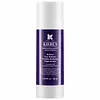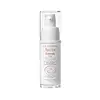What's inside
What's inside
 Key Ingredients
Key Ingredients

 Benefits
Benefits

 Concerns
Concerns

 Ingredients Side-by-side
Ingredients Side-by-side

Cellulose Acetate Butyrate
Tricaprylin
MaskingRetinol
Skin ConditioningPentaerythrityl Tetra-Di-T-Butyl Hydroxyhydrocinnamate
AntioxidantSilica Silylate
EmollientSilica
AbrasiveMagnesium Stearate
Cosmetic ColorantWater
Skin ConditioningGlycerin
HumectantPropanediol
SolventButylene Glycol
HumectantGlycereth-26
HumectantPanthenol
Skin Conditioning1,2-Hexanediol
Skin ConditioningPolyglycerin-3
HumectantC12-14 Pareth-12
EmulsifyingPhenoxyethanol
PreservativeCaprylyl Glycol
EmollientAmmonium Acryloyldimethyltaurate/Vp Copolymer
Betaine
HumectantXanthan Gum
EmulsifyingEthylhexylglycerin
Skin ConditioningAdenosine
Skin ConditioningCarbomer
Emulsion StabilisingGlyceryl Acrylate/Acrylic Acid Copolymer
HumectantTromethamine
BufferingGlycereth-25 PCA Isostearate
EmulsifyingT-Butyl Alcohol
PerfumingTocopherol
AntioxidantCellulose Acetate Butyrate, Tricaprylin, Retinol, Pentaerythrityl Tetra-Di-T-Butyl Hydroxyhydrocinnamate, Silica Silylate, Silica, Magnesium Stearate, Water, Glycerin, Propanediol, Butylene Glycol, Glycereth-26, Panthenol, 1,2-Hexanediol, Polyglycerin-3, C12-14 Pareth-12, Phenoxyethanol, Caprylyl Glycol, Ammonium Acryloyldimethyltaurate/Vp Copolymer, Betaine, Xanthan Gum, Ethylhexylglycerin, Adenosine, Carbomer, Glyceryl Acrylate/Acrylic Acid Copolymer, Tromethamine, Glycereth-25 PCA Isostearate, T-Butyl Alcohol, Tocopherol
Water
Skin ConditioningAluminum Starch Octenylsuccinate
AbsorbentGlycerin
HumectantIsodecyl Neopentanoate
EmollientPPG-15 Stearyl Ether
EmollientCetyl Alcohol
EmollientCetearyl Alcohol
EmollientGlyceryl Stearate
EmollientPEG-100 Stearate
Caprylic/Capric Triglyceride
MaskingDimethicone
Emollient1,2-Hexanediol
Skin ConditioningAscophyllum Nodosum Extract
Skin ConditioningBHT
AntioxidantCaprylyl Glycol
EmollientCeteareth-33
CleansingDisodium EDTA
Retinal
Skin ConditioningSodium Dextran Sulfate
Gel FormingSodium Hyaluronate
HumectantSodium Hydroxide
BufferingTocopheryl Acetate
AntioxidantXanthan Gum
EmulsifyingWater, Aluminum Starch Octenylsuccinate, Glycerin, Isodecyl Neopentanoate, PPG-15 Stearyl Ether, Cetyl Alcohol, Cetearyl Alcohol, Glyceryl Stearate, PEG-100 Stearate, Caprylic/Capric Triglyceride, Dimethicone, 1,2-Hexanediol, Ascophyllum Nodosum Extract, BHT, Caprylyl Glycol, Ceteareth-33, Disodium EDTA, Retinal, Sodium Dextran Sulfate, Sodium Hyaluronate, Sodium Hydroxide, Tocopheryl Acetate, Xanthan Gum
 Reviews
Reviews

Ingredients Explained
These ingredients are found in both products.
Ingredients higher up in an ingredient list are typically present in a larger amount.
1,2-Hexanediol is a synthetic liquid and another multi-functional powerhouse.
It is a:
- Humectant, drawing moisture into the skin
- Emollient, helping to soften skin
- Solvent, dispersing and stabilizing formulas
- Preservative booster, enhancing the antimicrobial activity of other preservatives
Caprylyl Glycol is a humectant and emollient, meaning it attracts and preserves moisture.
It is a common ingredient in many products, especially those designed to hydrate skin. The primary benefits are retaining moisture, skin softening, and promoting a healthy skin barrier.
Though Caprylyl Glycol is an alcohol derived from fatty acids, it is not the kind that can dry out skin.
This ingredient is also used as a preservative to extend the life of products. It has slight antimicrobial properties.
Learn more about Caprylyl GlycolGlycerin is already naturally found in your skin. It helps moisturize and protect your skin.
A study from 2016 found glycerin to be more effective as a humectant than AHAs and hyaluronic acid.
As a humectant, it helps the skin stay hydrated by pulling moisture to your skin. The low molecular weight of glycerin allows it to pull moisture into the deeper layers of your skin.
Hydrated skin improves your skin barrier; Your skin barrier helps protect against irritants and bacteria.
Glycerin has also been found to have antimicrobial and antiviral properties. Due to these properties, glycerin is often used in wound and burn treatments.
In cosmetics, glycerin is usually derived from plants such as soybean or palm. However, it can also be sourced from animals, such as tallow or animal fat.
This ingredient is organic, colorless, odorless, and non-toxic.
Glycerin is the name for this ingredient in American English. British English uses Glycerol/Glycerine.
Learn more about GlycerinWater. It's the most common cosmetic ingredient of all. You'll usually see it at the top of ingredient lists, meaning that it makes up the largest part of the product.
So why is it so popular? Water most often acts as a solvent - this means that it helps dissolve other ingredients into the formulation.
You'll also recognize water as that liquid we all need to stay alive. If you see this, drink a glass of water. Stay hydrated!
Learn more about WaterXanthan gum is used as a stabilizer and thickener within cosmetic products. It helps give products a sticky, thick feeling - preventing them from being too runny.
On the technical side of things, xanthan gum is a polysaccharide - a combination consisting of multiple sugar molecules bonded together.
Xanthan gum is a pretty common and great ingredient. It is a natural, non-toxic, non-irritating ingredient that is also commonly used in food products.
Learn more about Xanthan Gum